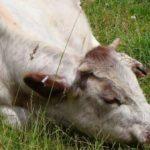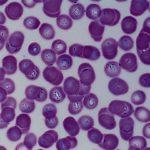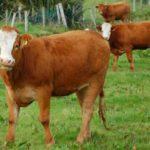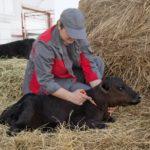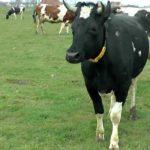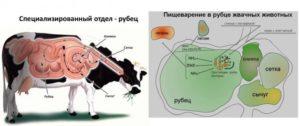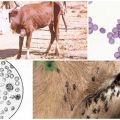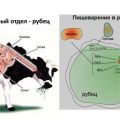Causes of infection and symptoms of babesiosis in cattle, methods of treatment and prevention
Bovine babesiosis is understood as a common pathology that is invasive in nature. It is found in various regions and can lead to serious losses and death of large numbers of livestock. Therefore, it is so important to deal with the prevention of the disease in a timely manner. If its symptoms appear, it is recommended to immediately isolate the sick animal and take measures to treat it.
Description of the disease
Babesiosis is a dangerous invasive disease associated with damage to tissues and organs of animals by protozoa. Parasitic babesias are considered very dangerous. These microorganisms have spread almost throughout the planet. The only exception is Antarctica. The disease is characterized by vague symptoms. It is often identified with piroplasmosis.
Causes and symptoms of the disease
Quite large parasites are considered the causative agents of pathology. They can be of different shapes. However, the most common is the pyriform. Parasites usually invade blood cells. As a result, potent toxic substances accumulate in the body, which poison it.
The main vector of the disease is considered to be parasitic ticks from the genus Ixodes. Therefore, it is usually seasonal and associated with the period of mass development of ticks. The peak of insect activity is in June-July. Almost all members of the genus spread a specific pathogen.
First of all, the disease manifests itself in the form of complex lesions of the nervous system and dysfunctions of organs and systems. The pathogen is quite contagious. Therefore, babesiosis cannot be prevented without annual prophylaxis. In cattle, the pathology causes the following symptoms:
- decreased milk yield and decreased appetite;
- an increase in body temperature up to 40-42 degrees, a feverish state;
- paleness of mucous membranes - they quickly acquire a yellow tint;
- pink color of urine - by the end of the disease, it becomes dark red;
- cessation of milking for 4-6 days;
- watery blood composition.
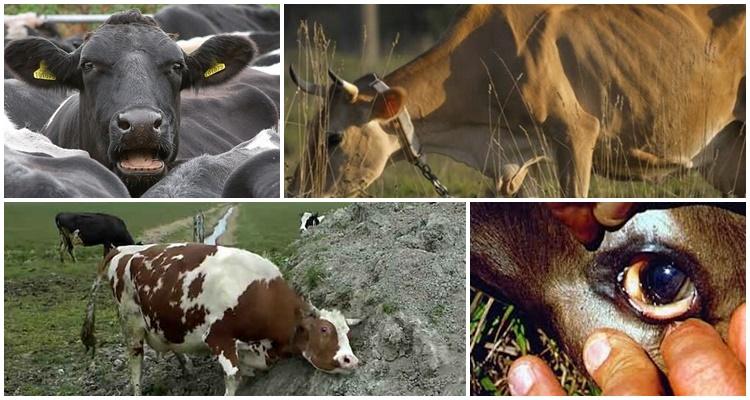
Diagnosing the problem
To make a diagnosis, a comprehensive approach is used. For this, it is worth considering the clinical picture, the results of microscopic examination of smears. Serological diagnostic methods are considered informative.
How to treat bovine babesiosis
When babesia is detected in the body, it is important to take immediate action. The parasite provokes a swift defeat and causes negative changes in organs and systems. In this case, the affected animals often die. Therefore, at the first symptoms of pathology, the animal needs peace and comfort. It is recommended to feed him correctly and give antiparasitic agents.
First of all, the pet should be provided with complete rest and isolate it from other animals. Increased activity and prolonged physical activity negatively affect the general condition of the animal. This negatively affects the state of the immune system. As a consequence, there is an increase in invasive lesions. To isolate the affected animals, they are moved to a bright room. In this case, the temperature should be at least +15 degrees. The relative humidity cannot exceed 85%. The main remedies for the treatment of babesiosis include:
- "Azidin-vet" - the drug is administered intramuscularly or subcutaneously. It must be entered 1 time. If the condition does not improve, a second injection is given after 24-30 hours.
- "Acaprin" - the composition is used for intramuscular or subcutaneous injections. The agent should be administered in the form of an aqueous solution with a concentration of 1%.
- "Hemosporidin" - the drug is suitable for subcutaneous or intramuscular administration. In this case, a 1-2% aqueous solution is used. It is recommended to enter the substance 2-3 times with an interval of a day.
- "Imidocarb" - injected intramuscularly or subcutaneously. The tool is used 1 time. If the condition does not improve, the administration should be repeated after 1-2 days.

Additional agents that are used to treat livestock include the following:
- Albargin is a powerful antiparasitic agent with a complex effect. The drug is administered 1 time by intravenous injection.
- Vitamin B12 - used to stimulate hematopoietic functions. The composition is suitable for injection. 1 animal requires 1-2 milligrams of the substance. It is recommended to use the drug for several days until the blood structure improves.
- Glauber's salt - improves the condition of the body with the development of ventricular atony. The drug is used in the form of a solution with a concentration of 1%. The substance is washed out the scar using a gastric tube.
- Caffeine is used to normalize the functions of the heart and blood vessels. The substance is suitable for subcutaneous injection. To do this, it is worth using 5-10 milliliters per 1 individual per day. The solution is recommended to be administered once. If necessary, the procedure should be repeated.
- Sodium chloride - used to combat persistent atony of the proventriculus. The product is suitable for intravenous administration. In this case, it is recommended to use aqueous solutions with a concentration of 10%. For 1 individual, 200-300 milliliters are required. The duration of therapy depends on the severity of the disease. It usually takes several days.
For the treatment to be effective, it is important to provide your cattle with a correct and healthy diet.
At this time, the animal's body needs vitamins, minerals and other beneficial elements that activate the immune system.
For this it is recommended to use chopped hay from meadow grasses, green grass, fresh roots. To improve the condition of animals, fresh milk or reverse is suitable. It is recommended to use this type of feeding 3 times a day. 1 animal will need 1.5-2 liters.
Prevention measures
To avoid the development of pathology, it is recommended to adhere to the following rules:
- graze livestock on proven pastures that are protected from ticks;
- keep cattle in a stall;
- monitor the appearance and keep animals clean;
- during the mass development of ticks, treat the outer covers every 10 days with acaricides - these include "Permethrin", "Butoks";
- in regions with an unfavorable situation at the beginning of the mass development of ticks, once administered "Azidin-vet" or "Hemosporidin".
Is it dangerous for humans
In humans, this pathology usually develops against the background of a weakened immune system. Moreover, such cases are extremely rare. With normal immunity, the disease is asymptomatic.
Babesiosis is one of the most complex parasitic infestations that often occurs in cattle. Each year, the pathology spreads to large areas. Therefore, sick animals are found everywhere. To cope with the disease and prevent the death of the livestock, it is important to take timely measures.

